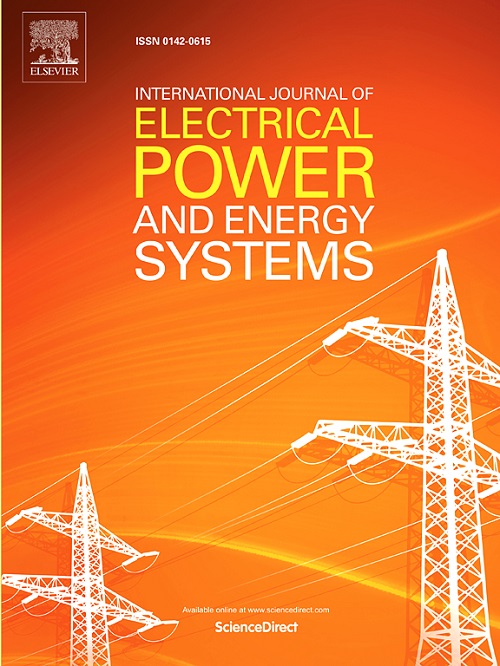Power system transient stability assessment based on hierarchical graph pooling method considering missing data
IF 5
2区 工程技术
Q1 ENGINEERING, ELECTRICAL & ELECTRONIC
International Journal of Electrical Power & Energy Systems
Pub Date : 2025-09-29
DOI:10.1016/j.ijepes.2025.111194
引用次数: 0
Abstract
The transient stability assessment (TSA) model based on graph deep learning relies on complete system topology and its characteristics. However, electrical operation data may be missing during the measurement and transmission process, which can lead to a decline in model evaluation performance. To address this issue, this paper proposes a hierarchical graph pooling TSA method for power systems that accounts for missing data. First, the power system is modeled as a graph with topological connections, and the missing data is filled using the K-order neighborhood mean (KNM). Next, a masked graph autoencoder with jumping knowledge is developed to reconstruct the missing features. Finally, considering both the topological attributes of nodes and the temporal characteristics of electrical quantities, a well-designed graph pooling method is introduced. During hierarchical graph pooling, subgraph features of the power grid at different scales are extracted and fused to achieve accurate and reliable TSA. Test results on the IEEE 39-bus system and a provincial power system in China demonstrate that the proposed method can maintain high evaluation performance under various types of missing data, exhibiting strong robustness and practicality.
考虑缺失数据的分层图池化电力系统暂态稳定评估
基于图深度学习的暂态稳定评估(TSA)模型依赖于完整的系统拓扑及其特性。然而,在测量和传输过程中,可能会丢失电气运行数据,从而导致模型评估性能下降。为了解决这一问题,本文提出了一种考虑缺失数据的电力系统分层图池TSA方法。首先,将电力系统建模为具有拓扑连接的图,并用k阶邻域均值(KNM)填充缺失数据。其次,提出了一种具有跳跃知识的掩码图自编码器来重建缺失的特征。最后,综合考虑节点的拓扑属性和电量的时间特征,提出了一种设计良好的图池化方法。在分层图池化过程中,对不同尺度的电网子图特征进行提取和融合,实现准确可靠的TSA。在IEEE 39总线系统和中国一个省级电力系统上的测试结果表明,该方法在各种类型的缺失数据下都能保持较高的评估性能,具有较强的鲁棒性和实用性。
本文章由计算机程序翻译,如有差异,请以英文原文为准。
求助全文
约1分钟内获得全文
求助全文
来源期刊
CiteScore
12.10
自引率
17.30%
发文量
1022
审稿时长
51 days
期刊介绍:
The journal covers theoretical developments in electrical power and energy systems and their applications. The coverage embraces: generation and network planning; reliability; long and short term operation; expert systems; neural networks; object oriented systems; system control centres; database and information systems; stock and parameter estimation; system security and adequacy; network theory, modelling and computation; small and large system dynamics; dynamic model identification; on-line control including load and switching control; protection; distribution systems; energy economics; impact of non-conventional systems; and man-machine interfaces.
As well as original research papers, the journal publishes short contributions, book reviews and conference reports. All papers are peer-reviewed by at least two referees.

 求助内容:
求助内容: 应助结果提醒方式:
应助结果提醒方式:


